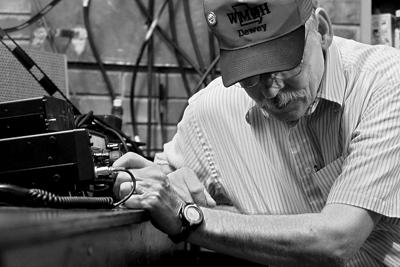“The Surprising Role of Ham Radio in Disaster Response: From Hurricane Katrina to Hurricane Harvey”
Amateur radio, also known as ham radio, is a powerful tool for emergency communication during disasters and crises. When traditional forms of communication like phone and internet networks fail, ham radio can provide a reliable means of staying connected and coordinated. This is especially important during natural disasters like hurricanes, when strong winds and flooding can disrupt or destroy communication infrastructure.
One of the most notable examples of the importance of amateur radio during a disaster is the aftermath of Hurricane Katrina in 2005. As one of the strongest and most destructive hurricanes in United States history, Katrina caused widespread damage and disruption to communication networks in the Gulf Coast region. Many people were unable to call for help or connect with loved ones, leaving them feeling isolated and helpless.
In the midst of this chaos, amateur radio operators played a crucial role in providing emergency communication. They set up temporary communication networks and used their radios to transmit and receive messages over long distances. They were able to connect people with rescuers, provide updates on the storm’s progress and damage, and offer support and reassurance to those in need.
There are several types of radios that are commonly used during disasters and emergencies. Handheld radios, also known as walkie-talkies, are portable and easy to use. They can be powered by batteries or hand-crank generators, making them suitable for use in areas with limited access to electricity. Mobile radios, which are mounted in vehicles, have a larger range and can be used to communicate over longer distances. Base station radios, which are stationary and typically mounted in a fixed location, have the longest range and are often used as part of a communication network.

Daniel Southern the amateur radio operator, who goes by the call sign “K5ACL,” shared his experience using his radio during Hurricane Harvey in 2017. As the storm made landfall in Texas, Daniel K5ACL and other ham operators sprang into action, setting up a temporary communication network to support rescue and relief efforts. They used their radios to transmit and receive messages, coordinate with other operators, and provide updates on the storm’s progress.
Daniel K5ACL recalled one particularly memorable moment during the storm, when he received a message from a family who had been stranded in their flooded home. They had been unable to call for help, but were able to reach Daniel K5ACL via his radio. He was able to relay their message to rescue teams, who were able to reach the family and bring them to safety.
This story illustrates the critical role that amateur radio can play during a disaster. It also highlights the importance of being prepared as a ham operator. It’s essential to have a well-equipped radio setup and to be trained in emergency communication techniques. It’s also important to participate in drills and exercises to stay sharp and ready to assist when the need arises.
Without a doubt, amateur radio is an essential tool for emergency communication during disasters. It’s important for ham operators to be prepared and trained to assist in rescue and relief efforts, and for the public to be aware of the resources and support that amateur radio can provide during a crisis. By understanding the value of amateur radio and how it can be used to keep people connected and safe during a disaster, we can better understand the importance of being prepared and ready to help in times of need.

